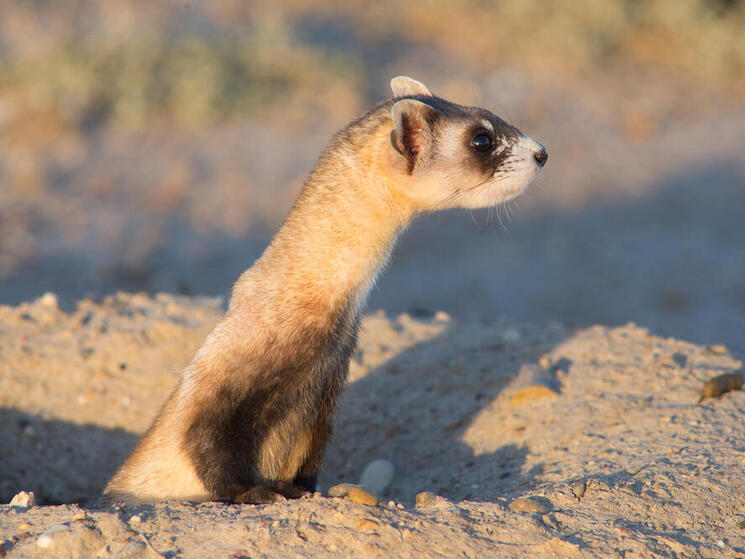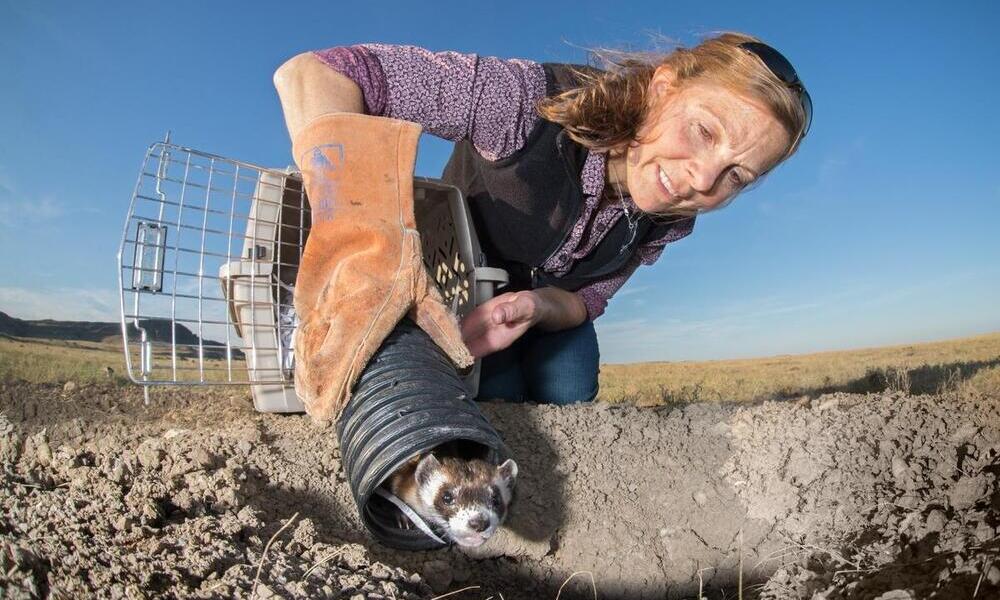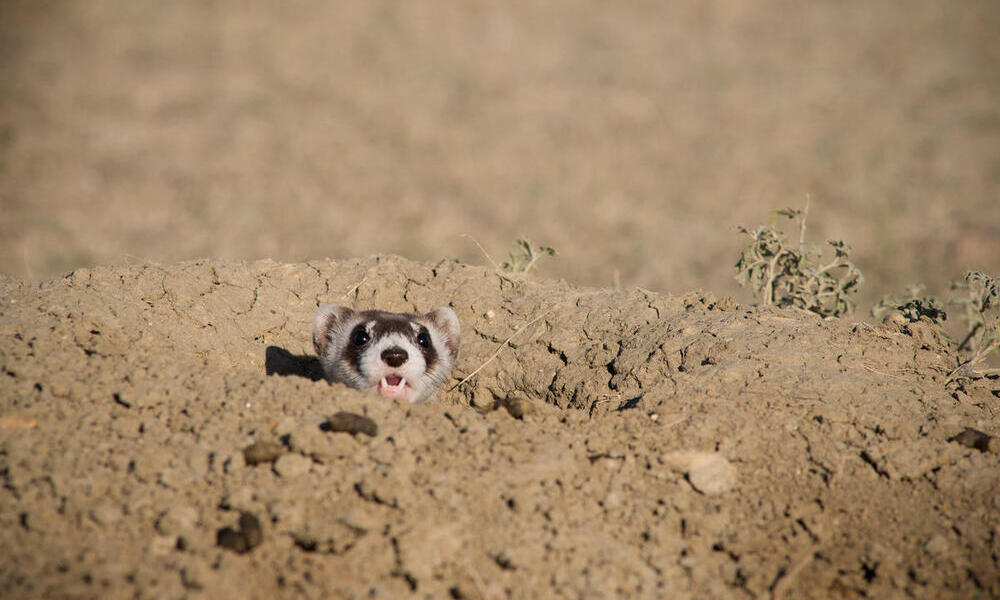
Endangered Black-footed Ferrets Helped by Innovative Technology
- Date: 16 June 2023
Tracking, vaccinating, and returning a black-footed ferret to its burrow in complete darkness is no easy task. But for WWF’s Black-footed Ferret Restoration Manager Kristy Bly, it’s all in a night’s work. For over 20 years, Kristy has teamed up with numerous federal, Tribal, state, and private entities to recover and protect black-footed ferrets.
Black-footed ferrets – one of North America’s most endangered mammals – can only survive within the Great Plains’ prairie dog colonies. Currently there are about 390 ferrets in the wild, but they face mounting danger from habitat loss and sylvatic plague, a non-native disease that affects both ferrets and prairie dogs, their main source of prey. Ferrets not only rely on prairie dogs for food, but also use their burrows for shelter and raising young. Sylvatic plague, a fast-spreading bacterial disease, is threatening both species, making the need for vaccination and protection programs imperative.
Monitoring and protecting ferrets from plague is complex, tedious work. Because ferrets are elusive and nocturnal, scientists use high-intensity spotlights mounted to field trucks and advanced surveillance equipment like thermal cameras to locate them. Much of the field equipment requires battery power from field trucks that must remain noisily idling to charge the equipment, which often disrupts ferret behavior. The vet trailer, where ferrets receive sylvatic plague vaccinations, also runs on propane gas and loud gas-powered generators.

Between the challenges scientists face while searching for ferrets in the dark, and the noisy, polluting power sources that are necessary to charge their equipment, there is a unique opportunity to replace this old technology with advanced solutions. In addition, any technology that is used in the Great Plains must be able to withstand harsh field conditions like extreme temperatures and trampling by bison and cattle. Tackling these issues requires collaboration with private sector companies whose technology can streamline and advance conservation efforts.
WWF has recently partnered with Jackery to provide a more ecologically friendly method for powering ferret monitoring equipment. WWF will be testing several solar-powered generators and power stations with the goal of replacing gas-powered generators. From August to October of this year, WWF will be conducting ferret surveys and vaccinations on the Fort Belknap and Crow Indian Reservations in Montana, piloting solar-powered technology.

“We hope that using solar powered technology to help us detect and protect black-footed ferrets will be less disruptive to them, less harmful to the environment, and improve our ability to track progress toward the recovery goal of 3,000 ferrets in the wild. Evaluating new equipment aligns well with WWF’s commitment to finding innovative solutions for complex conservation challenges,” said WWF’s Kristy Bly.
The collaborative ferret survey efforts in Montana are expected to generate new tools that will help WWF, Native nations, land management agencies, and landowners improve detection of black-footed ferrets. Ultimately, this work will advance recovery of this endangered North American mammal. Using new technology to propel this important conservation work forward demonstrates the possibility and promise of WWF partnerships.